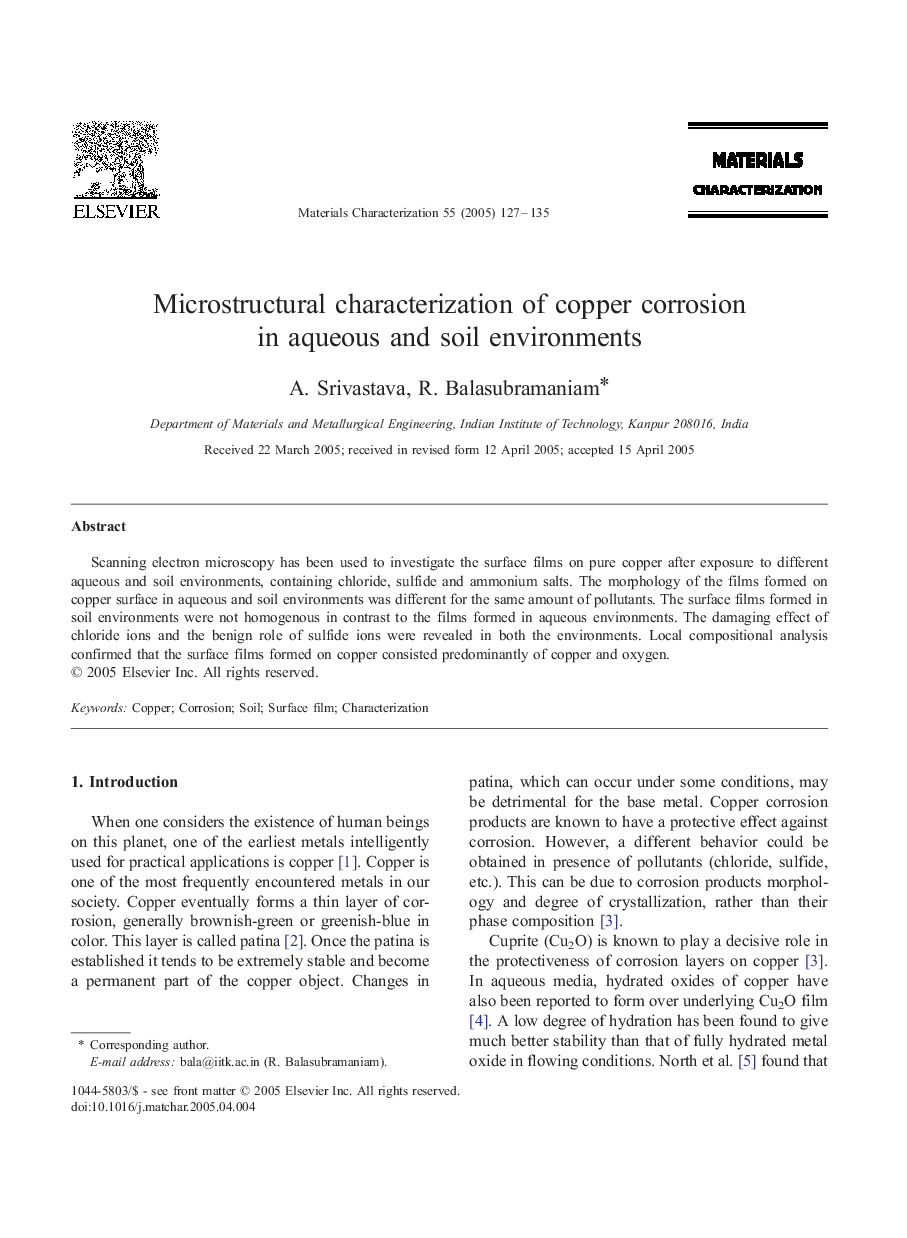| Article ID | Journal | Published Year | Pages | File Type |
|---|---|---|---|---|
| 10645774 | Materials Characterization | 2005 | 9 Pages |
Abstract
Scanning electron microscopy has been used to investigate the surface films on pure copper after exposure to different aqueous and soil environments, containing chloride, sulfide and ammonium salts. The morphology of the films formed on copper surface in aqueous and soil environments was different for the same amount of pollutants. The surface films formed in soil environments were not homogenous in contrast to the films formed in aqueous environments. The damaging effect of chloride ions and the benign role of sulfide ions were revealed in both the environments. Local compositional analysis confirmed that the surface films formed on copper consisted predominantly of copper and oxygen.
Related Topics
Physical Sciences and Engineering
Materials Science
Materials Science (General)
Authors
A. Srivastava, R. Balasubramaniam,
